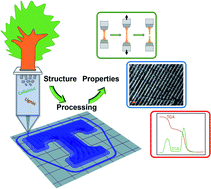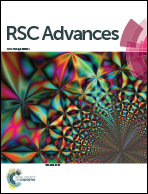3D printing of biomass-derived composites: application and characterization approaches
Abstract
Three-dimensional (3D) printing is an additive manufacturing technique with a wide range of 3D structure fabrication and minimal waste generation. Recently, lignocellulosic biomass and its derivatives have been used in 3D printing due to their renewable nature and sustainability. This review provides a summary of the development of different types of biomass and its components such as cellulose and lignin in 3D printing, brief data analysis and introduction to characterization methods of the 3D printed composites. Mechanical properties such as tensile properties, Izod impact properties, and flexural properties, thermal properties and morphological properties of 3D-printed composites are discussed. In addition, other available characterization methods of 3D-printed composites are reported. The future direction of biomass and its derivatives in the field of 3D printing is also discussed.

- This article is part of the themed collection: 2020 Reviews in RSC Advances


 Please wait while we load your content...
Please wait while we load your content...